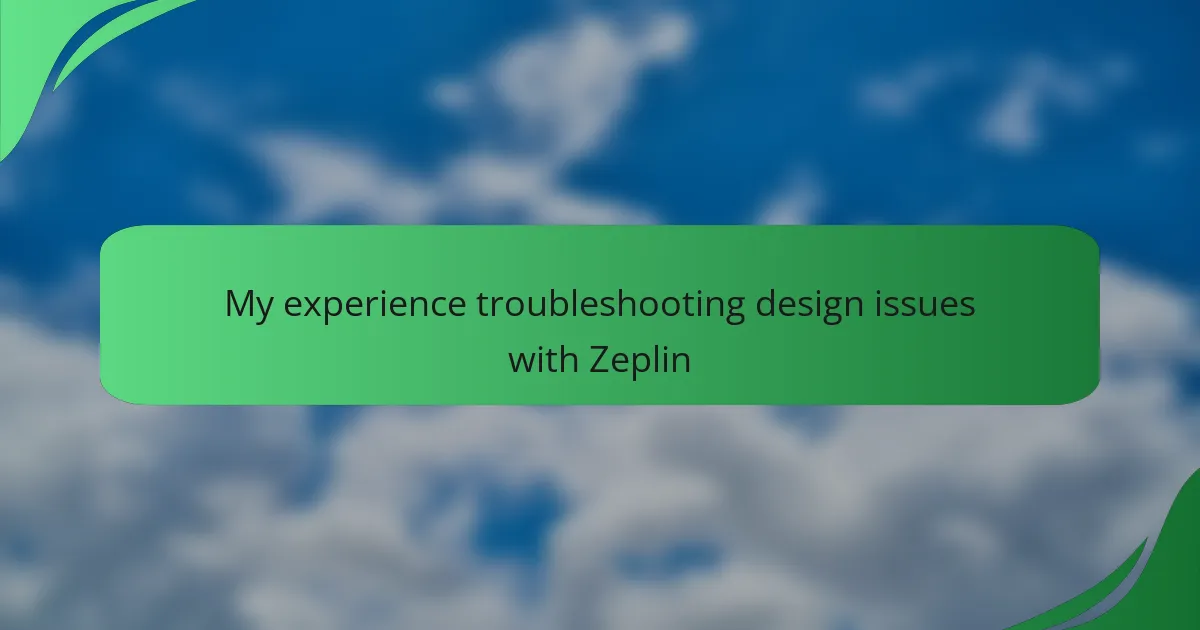Key takeaways Interface interaction design enhances user experience by understanding behavior and creating intuitive layouts. Effective layout structures guide users through content, improving usability and engagement. Bootstrap simplifies web design with a responsive grid system and pre-designed components, allowing flexibility and creativity. Attention to detail in spacing and alignment significantly improves the visual appeal and […]
Key takeaways Iterative design involves continuous refinement through cycles of prototyping, feedback, and adjustments, ensuring user needs are prioritized. Agile methodology emphasizes collaboration, flexibility, and regular user feedback, promoting meaningful improvements in design projects. User feedback is crucial for understanding real interactions, leading to enhanced product experiences and user loyalty. Embracing failure and fostering open […]
Key takeaways Interface interaction design focuses on creating engaging, user-friendly interfaces that blend aesthetics and functionality. Prototyping is essential for visualizing ideas, inviting collaboration, and gathering user feedback, which significantly improves design outcomes. Adobe XD offers intuitive tools for creating interactive prototypes, enhancing user experiences with features like auto-animate and real-time collaboration. Effective prototyping requires […]
Key takeaways A/B testing enables data-driven design decisions, enhancing user engagement and satisfaction through informed adjustments. Understanding user behavior and preferences is crucial; user feedback can radically influence design outcomes. Conducting A/B tests involves defining goals, creating variants, running tests, and analyzing results for statistical significance. Small design changes, such as button color and placement, […]
Key takeaways Interface interaction design focuses on creating intuitive user experiences through thoughtful design elements like button placement and color schemes. Documenting processes enhances clarity, consistency, and team collaboration, minimizing misunderstandings and improving efficiency. Notion is a versatile tool for organizing documentation, offering features like databases, templates, and real-time collaboration to streamline workflows. Creating and […]
Key takeaways Simplifying forms by minimizing input fields and using clear labels significantly enhances user experience and satisfaction. Incorporating real-time validation and visual cues improves usability, reducing frustration during form completion. Mobile optimization is essential, as poorly designed mobile forms can lead to high abandonment rates and user frustration. Empathy in design, anticipating user needs, […]
Key takeaways User-centered design prioritizes user needs, resulting in higher satisfaction and loyalty. Key principles include empathy, iteration, accessibility, usability, and engagement. Effective interface design requires clarity, consistency, feedback, accessibility, and simplicity. Applying user-centered design involves conducting research, usability testing, creating personas, and iterative design. Understanding user-centered design principles User-centered design principles focus on creating […]
Key takeaways Interface interaction design prioritizes a user-centric approach, emphasizing the emotional journey for effective experiences. Collaborative design tools like Figma enhance creativity and streamline workflows, allowing real-time feedback and shared ownership. Key features of Figma include its cloud-based platform, component system for consistency, and robust prototyping capabilities. Effective collaboration in Figma relies on clear […]
Key takeaways Interface interaction design focuses on creating intuitive user interfaces that enhance user engagement and clarity. Animations guide users and convey emotions, making interactions more engaging and enjoyable. Best practices for animations include keeping them simple, ensuring consistency, and focusing on timing for better user experience. Thorough testing and consideration of accessibility are essential […]
Key takeaways Prioritize usability and user feedback for effective interface interaction design. Utilize effective design tools like Zeplin for seamless collaboration and clear communication between designers and developers. Adopt a systematic troubleshooting process to address design discrepancies by reviewing specs and collaborating with the team. Cultivate open communication and take breaks to foster creativity and […]








